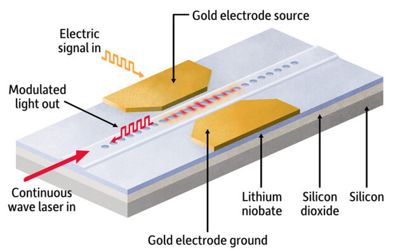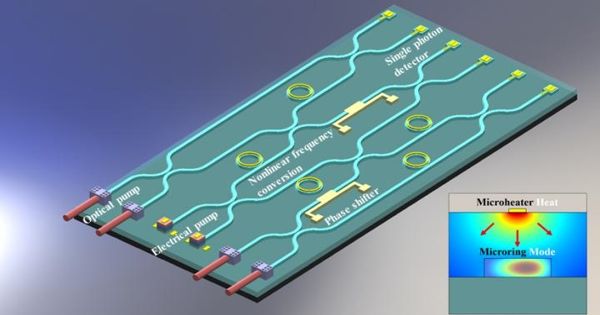For the first time, researchers have built and demonstrated a digital photonic to an analog converter without leaving the optical realm. These innovative converters will advance the next-generation data processing hardware with high significance for data centers, 6G networks, artificial intelligence, and more. Photonic Integrated Circuit (PIC) or Integrated Optical Circuit (ICC) is a system that incorporates several (at least two) photonic functions and, as such, is identical to an electronic integrated circuit.
Researchers create the novel photonic chip. Digital to analog converter bridges the gap between the internet and electronic hardware.
Researchers at George Washington University and the University of California, Los Angeles, have for the first time built and demonstrated digital photonics to analog converters without leaving the optical realm. These innovative converters will advance the next-generation data processing hardware with high significance for data centers, 6G networks, artificial intelligence, and more.

However, the chip developed by the researchers is very different from the traditional processor and did not rely on silicon photonics. While most chips can be reprogrammed, researchers can only solve a special instance of the subset sum problem. The laser was used to etch the mission into a special glass by constructing a network of wave-guides that would channel photons into the processor, as well as a series of junctions that would cause light beams to be broken, transferred, or converged.
Current optical networks, by which much of the world’s data is distributed, as well as many sensors, involve a digital-to-analog conversion, connecting digital devices synergistically to analog components.
Using a silicone photonic chip platform, Volker J. Sorger, associate professor of electrical and computer engineering at GW, and his colleagues have developed a digital-to-analog converter that does not require the signal to be transformed into an electrical realm, thus demonstrating the ability to satisfy the need for high data processing capability when operating on optical data, interacting to digitize.
“We found a way to seamlessly bridge the gap that exists between these two worlds, analog and digital,” Sorger said. “This device is a key stepping stone for next-generation data processing hardware.
If there is some possibility of mapping real-world problems into subset sum problems that could be overcome in this manner, it is likely that any realistic implementation will use an alternate chip design. But the researchers believe it’s a perfect example of the ability of photonic methods to greatly outstripping classical computers in the face of certain obstacles.













